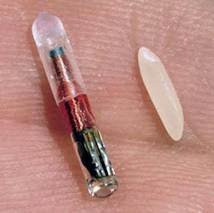Cat microchipping holds many benefits and this article tries to explain why microchipping a cat is so important.
Microchipping a Cat and Why You Should Consider it.
On average, 900 pets go missing every day in the UK and each year thousands of lost and abandoned animals are taken in by charities and rescue centres across the UK.
Some have valuable pedigree’s that may have even done well at show or belong to breeders. Sadly, many of these animals never make it back home because they can’t be identified. Microchipping a cat or indeed your other pets could help reunite lost pets with owners.
Thinking About Getting Your Cat Microchipped?
Animal and cat microchipping have already been the subject of healthy debates, discussions and articles written about micro-chipping, especially in-door pets and in particular, indoor cats. Notwithstanding the glossy technical blurb from microchip manufacturers and pet database service providers, it’s no wonder the majority of us hold quite strong opinions about personal experiences both good and not so good, the pros, con’s, even the reliability.
There is every certainty therefore, these deliberations will continue well into the future whilst caring owners strive to separate myth from fact and do the right thing for their much-treasured cat.
So is Microchipping a Cat the Right Thing to do?
I qualified as a veterinary nurse over 30 years ago and although no longer work in practice, I have maintained a commitment to always aim to ensure the very best of care and love for animals – like the majority of you reading this article.
Whether dealing with owners as a nurse, customers whilst running a pet grooming & retail business or working with fellow show and breeding enthusiasts I became acutely aware of one common factor; that is, we all utterly dread the prospect of ever losing our pets and loss due to wondering, escape, getting lost & injured even theft is somehow totally unthinkable.
Truth is, if we are being really honest here, we tend not to think about microchipping a cat much past the early days when we first acquire our new feline friend. This is usually when the verdict to micro chip, or not, is determined.
As a trainee nurse, I was always taught to not take risks when it comes to health, welfare & well being and initially when micro chipping first became available, I was a staunch advocate of the new technology, having lost a couple of my ‘moggie’ cats in past years not knowing to this day how, where or why……
 Technology to the rescue!
Technology to the rescue!
There was no hesitation then 13 years ago for my new border collie pup ‘Star’ to be micro-chipped by the breeder using this wonderful new modern technology. A clever little chip about the size of a large grain of rice, holding a number unique to Star and registering it with my name address and contact details. All I needed to do was contact the database service and notify them she was lost and eventually, all being well, they would trace either Star to me or vice versa and we would be reunited.
Unfortunately, due to the site of the chip – in the scruff at the back of her neck – the chip eventually migrated and ended up somewhere in the ruffle low at the front of her chest. Needless to say I wasn’t impressed and felt most irritated.

My mission!
Despite my initial experience, my commitment and belief that chipping was the right thing to do remained unaltered. So much so that off I went on a very expensive course to obtain the right training from a reputable vet, acquire the required certificate to become an implanter as well as purchase the equally expensive equipment, chips and reading tool.
For several years thereafter, I provided micro-chipping services to breeders and pet owners, including my own, carefully ensuring that the chips were implanted in the area close to the top of the shoulders, where the skin is still loose enough to inject, but taught enough to reduce risk of migration.
Throughout this time, everything worked efficiently and I never experienced any feedback about unpleasant side effects such as infections or chips ceasing to work or moving from the implant site.
Clearly, implanting is the only decision for any responsible cat owner – or so I thought until I too started to listen to one or two myths….!
Myths, Concerns and Doubts About Microchipping Cats
Concern: The implantation procedure is too expensive.
Truth: Price can vary from one implanter to another as they have to cover costs for equipment, training, travel and the chips themselves. I used to vary my prices according to numbers being chipped. A litter of 5 or more would work out around £6.00 per chip, £10 if a single pet came to me and up to around £15 for single pets vaccinated in their own home within a 7 mile radius of my address. I also provide the option to microchip my Siamese kittens for free to prospective new owners.
Vets can sometimes be more expensive, however they will often charge less if they perform the implantation at the same time as another procedure, like spaying, neutering, or dental work. The advantage of this is that it’s less unpleasant and less stressful for the animal.
There may occasionally be a small fee for changing your address, phone number, or other contact information in the database; however most database providers will now do this FOC.
In any event, it’s still got to be cheaper than posting adverts in papers, notices on lamp posts, driving round to vets and newsagents asking for missing cat cards to be displayed on boards or in windows – yes I’I’ve tried them all but sadly to no avail.
Doubt: Not all implanters are suitably trained or skilled, chips migrate and won’t work.
Truth: It is imperative the chips are implanted by a trained and certificated implanter in the right location on your cat. To be fair, when this was reasonably new technology it wasn’t common knowledge that chips could eventually migrate. Lessons were rapidly learned and implant technique adjusted, along with the upgrade of chip technology.
Manufacturers now design the chips with anti-migrating properties. This gives the body time to allow the natural process for some connective tissue to form around the chip. When they’re implanted properly, today’s chips won’t migrate.
If you have the option for your cat to be microchipped before you collect it, check who will be implanting and where the chip will be sited. If you are not entirely happy with the answers and assurances, decline chipping at this stage and consult your vet.
Concern: It’s going to hurt my cat to get the chip implanted.

I always ask about the general health of the cat and have postponed microchipping any that have presented with skin conditions, or have been unwell recently, referring owners to consult a vet and advising them ask the vet to do the implant.
Some cats occasionally react apprehensively, or might panic due to wariness of previous injections Gentle re-assurances usually do the trick, along with plenty of cuddles afterwards!
The recent latest mini microchips are now even smaller, requiring a lesser sized needle gauge for implanting, which has considerably reduced the risk of discomfort.

Being relatively new to showing Siamese cats – this is one that actually worried me as I have often been able to quite distinctively feel chips below the skin surface. This actually resulted in me briefly opting to not microchip my Siamese show cats!
Truth: Judges will not penalize any cat if they feel a chip beneath the skin surface, nor will it be disadvantaged when competing against other cats that don’t have one.
However, if the judge feels a scab or notices fur missing from the implant site, this could result in the cat being disadvantaged, penalized – or even refused entry during the vetting in process. It is better to ensure that the implant site is fully healed before attending the next show.
The new mini micro chips are excellent and are virtually impossible to feel beneath the skin surface – and they work just as effectively.
Also due to the smaller gauge needles, there is significant reduction in the risk of bleeding or potential infection or scabs forming.
Myth: My cat will suffer from an infected wound where the micro chip has been implanted or it’s not safe for my cat to have a foreign object inside its body it will set off an allergic reaction or the signals between the reader and the microchip will be harmful to my cat
Any foreign material injected carries some risks. However, all implanting needles and chips are sterile and if the site is cleaned beforehand, there is very minimal risk of infection – I have never personally experienced an infection at the implant location site.
Also generally, the risks of are extremely minimal compared to the risk of your cat becoming lost.
Vets and trained implanters have been implanting microchips in animals of varying sizes – small birds to horses – for years, and the process has been proven to be very safe.
The chip is made out of an inert, biocompatible substance, which means it won’t cause an allergic reaction and it won’t degenerate over time.
Manufacturers now design the chips with anti-migrating properties. Once they’re in place, they won’t move around or get near any delicate tissues or organs
Because the microchip is placed just under the skin and not internally, microchip reading is completely safe. RFID (Radio Frequency Identification) technology is used between the reader and the chip – this is as harmless as listening to a radio in your home or car etc…
Doubt: My cats never go outside or only into my rear garden which is secure, so they don’t need to have a microchip ID.
Truth: We all know that in reality, is almost impossible for the average garden to be 100% secure from a cat determined to escape!
Cats in particular are excellent climbers & jumpers, gates may not always be secured properly, a chance opportunity can be seized when you answer the door, fencing might be damaged during a storm and so on…
Worst of all, cats can even be stolen-particularly attractive pedigree cats which are friendly and easily carried. No matter how vigilantly you watch your feline companion, there’s always a chance they could get out, or be stolen and if she doesn’t have any ID, it will be extremely hard to find her.
Collars and discs can be removed easily – a microchip cannot.
Myth: They couldn’t possibly give every pet with a microchip a unique number, especially using international databases. It’s inevitable, pet’s numbers will be duplicated.
Truth: The way technology works today, these tiny microchips can hold huge amounts of information. In fact, the microchips are designed to produce 275 billion different identification numbers. On top of that, manufacturers add unique product and manufacturer’s codes to identify their chips.
With all the possible combinations of ID numbers, there are more than enough numbers to make sure every pet has a completely unique number.

Truth: It’s true that a microchip won’t work to identify your cat unless it comes in contact with a microchip reader.
The main microchip manufacturers offer universal microchip readers to humane societies, shelters, and veterinarians for free or for a small fee.
Originally, most brands of microchip could only be read by its own brand of microchip reader or by a more expensive universal one – I paid extra for a universal reader when I purchased mine as did most vets, RSPCA, PDSA, RSPCB and most other charitable shelters, and even most of the responsible kennel & cattery owners now possess universal readers.
Myth: Eventually, the microchip will wear out and I’ll have to have it replaced, or
Doubt: It will eventually simply stop functioning
Truth: The chip doesn’t have an internal battery or power source.

Quite simply, as there is there is no battery and no moving parts in the chip there’s nothing to wear out or replace.
The microchip should last throughout your cat’s lifetime, they are designed to last for at least 25 years – however nothing is guaranteed to be 100% perfect and occasionally on rare occasions, microchips have been known to stop transmitting when activated.
I and other implanters usually test the chip using the reader prior to implanting. I repeat this at least twice and only proceed once the reader has instantly detected a signal from the chip. I also use this opportunity to double check the number reading with the individual chip labels and documentation to ensure they marry exactly.
Fortunately I have never experienced a defective chip after implanting or been aware that one has ceased to work. However, if this does happen, a new microchip will need to be implanted and usually most implanters will offer to replace the defective chip for free.
Myth: If someone else ever tries to claim my cat, the microchip ID number won’t hold up in court.
The truth: A microchip ID number is unique, it can’t be changed, and it links a cat to its owner through an international database. It works a lot like the serial numbers that link vehicle’s, stereos, TV sets, and other valuable possessions to their owners.
However in my opinion, there is still plenty of scope to improve how microchip identification is recognized in the UK as proof of ownership.
Admittedly, new owners can simply try and take the cat and have a new microchip implanted, however I and other responsible implanters will scan the animal first to double check whether a chip may already be present. If so, questions are then asked about the origin of the cat and how the presenting owner has come to be in possession. The database is also checked on line or via phone to see if the original registered chip owner has reported their cat lost or stolen…!
American and Canadian Kennel Clubs have recognized microchipping as definitive proof of a dog’s identity and ownership, and accept microchip identification to register pure bred dogs.
The new UK GCCF Registration document for pedigree cats now also includes a facility to do add microchip numbers.
So, although it might not be as conclusive in the UK as Canada or the USA, if you own a valuable cat, or if you’re simply afraid there might be a question about who has custody or ownership of your cat, microchip identification can still be a big help.
So what is the upshot?
Microchipping is safe, effective, durable, and dependable, but it can’t absolutely guarantee that a lost cat will be found. The best way to keep your cat safe is to use more than one form of identification. Microchips are long lasting and a wonderful means of identification, but like most systems, this can be by-passed by someone who is determined enough.
A collar tag that informs readers that your cat has been microchipped and gives them the number to call to reach the ID number database is useful.
Most microchip suppliers provide each chip with these discs already engraved with their unique number. If the tag becomes lost, a new one can be made cheaply if the owner takes their microchip ID to an engraver.
Also, if some kind stranger finds a collar tag with your name and address hopefully, they will contact you directly or return your lost cat back home.
If you do opt to chip your cat but have any doubts – talk to your vet and be open about sharing with them your concerns – including any myths you have acquired whilst undertaking your research.
Remember, it is your responsibility as the cat owner to update your cat’s microchip every time you change addresses or phone numbers.
Also if you do hand your cat to a new owner, it is imperative you provide them with the microchip details and arrange for ownership details to be changed on the database.
And finally do I still have any doubts….?
I have used the new modern mini microchips and can confidently say they are practically undetectable beneath the skin.
Needless to say, I have invested in a more batches, discarded the old ones and duly implanted all my cats – even those I take to shows.
I can quite confidently say that if one of my cats doesn’t do particularly well on the bench, it will be nothing to do with the microchip, but because it has been duly beaten by a better cat and much deserved winner!
So go forth and chip with confidence!
Some statistics UK
Last year over 126,000 stray dogs were handled by local authorities – of these around 7,500 were put to sleep.
Battersea Dog & Cat Home: Last year 54% of the dogs and 46% of cats that came into the home were strays
Petlog estimates that 58% of dogs are microchipped
Amazingly 77% of stray dogs which local authorities receive are not microchipped.
Last year, Petlog, the largest UK pet microchip and reunification database, handled over 40,000 missing calls relating to dogs alone.
A high percentage of lost cats are not even reported missing – some research suggests that a large proportion of cat owners simply accept that their cat has either strayed or been in a RTA and has probably sadly died somewhere, or simply found itself a new home
Article on cat microchipping benefits was written by –
Sheila Calloway RVN
Siamazing Siamese




